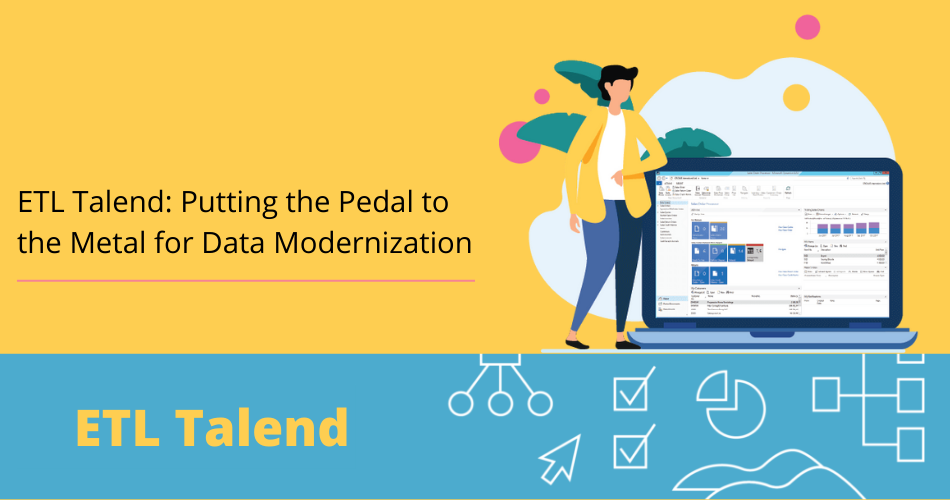
A survey found that two-thirds of companies either get little or no advantage from their data, despite the fact that the potentially useful data exists in practically every organization. The data is still locked up in antiquated systems, in isolated silos, or in applications that are infrequently ever utilized. But with the help of ETL Talend the appropriate data quality infrastructure and technique can completely integrate Talend DQ into pre-existing main operations over the whole of the software development cycle.
What exactly is ETL?
“Extract, transform, and load” is the meaning of the abbreviation “ETL.” These three database procedures have been integrated into one tool, and its primary purpose is to extract raw data from one database and insert it into another database.
When an organization is retiring a data storage solution and has to transfer all of that data into a new store before doing so, ETL is a tool that may be used. It is also advantageous for organizations that are merging data from several stores inside the firm, whether that’s Google Drive, a storage drive, or a database for analytics. These businesses may reap the benefits of this technology in a number of ways. The requirement for ETL Talend developer is great in a number of different companies, and those individuals are required to have a solid comprehension of SDLC and agile techniques in addition to an awareness of the most recent technologies and developments.
How does ETL Talend work?
Talend is a software platform that enables businesses to transform their data into a strategic asset that provides real-time, enterprise-wide insight into their customers, partners, and processes.
During the ETL process, data is first extracted from any number of sources, also known as data stores, and then it is transferred into the data warehouse. Consolidating the data is necessary when working with big amounts of data and numerous source systems at the same time. The Extract, Transform, and Load (ETL) procedure is used to move data from one database to another, and it is often the process that is necessary to load data into and out of data marts and data warehouses specifically.
Processing data is an integral aspect of the ETL cycle; hence, ETL is a time-consuming procedure. In order to get raw data ready for any corporate analytics use case, it is necessary to run it through a transformation process once it has been pulled from a data storage. As a result, it is essential that it be correct and structured in the appropriate manner. ETL technologies should not be seen as a solution for the speedy movement of data; rather, they should be given enough time to prepare data for the generation of useful business insights.
ETL Talend offers below features:
- The all-inclusive low-code platform helps you develop confidence in your data, integrates your data, and offers a single language for data.
- Integration of data, the integrity of information, and information management
- Takes care of the whole entire data lifespan.
- The Trust Score is sponsored by Talend.
- Supported by a network of ecosystem partners and advisory services
- Designed for cloud, multi-cloud, and mix applications
Talend is a very useful tool for any industry that seeks to achieve seamless integration between the sourcing and the objective, as well as the ability to blend up several databases and store them in the target network. As an ETL Talend developer, you will be responsible for the development of etl talend
- Establish a connection with the Business Analyst and the Data Modeler in order to comprehend the requirements, then construct the LLD and the visual workflow.
- Construct Talend tasks using the Dynamic jobs template, construct Shell scripts, and interface with the Database to populate data.
- Carry out all possible types of testing as well as peer evaluations and changes to the process.
- Coordinate with the operations of the release management, including the migration of jobs to higher environments and the production checkouts.
- Communicate the daily status to Business users and Clients using Deliverables based on an agile approach and connect with them.
- Coordinate with Infra/Admin activities on the setup and enhancement of Server/DB.
- Look for ways to automate processes and enhance them, and suggest modifications along those lines.
